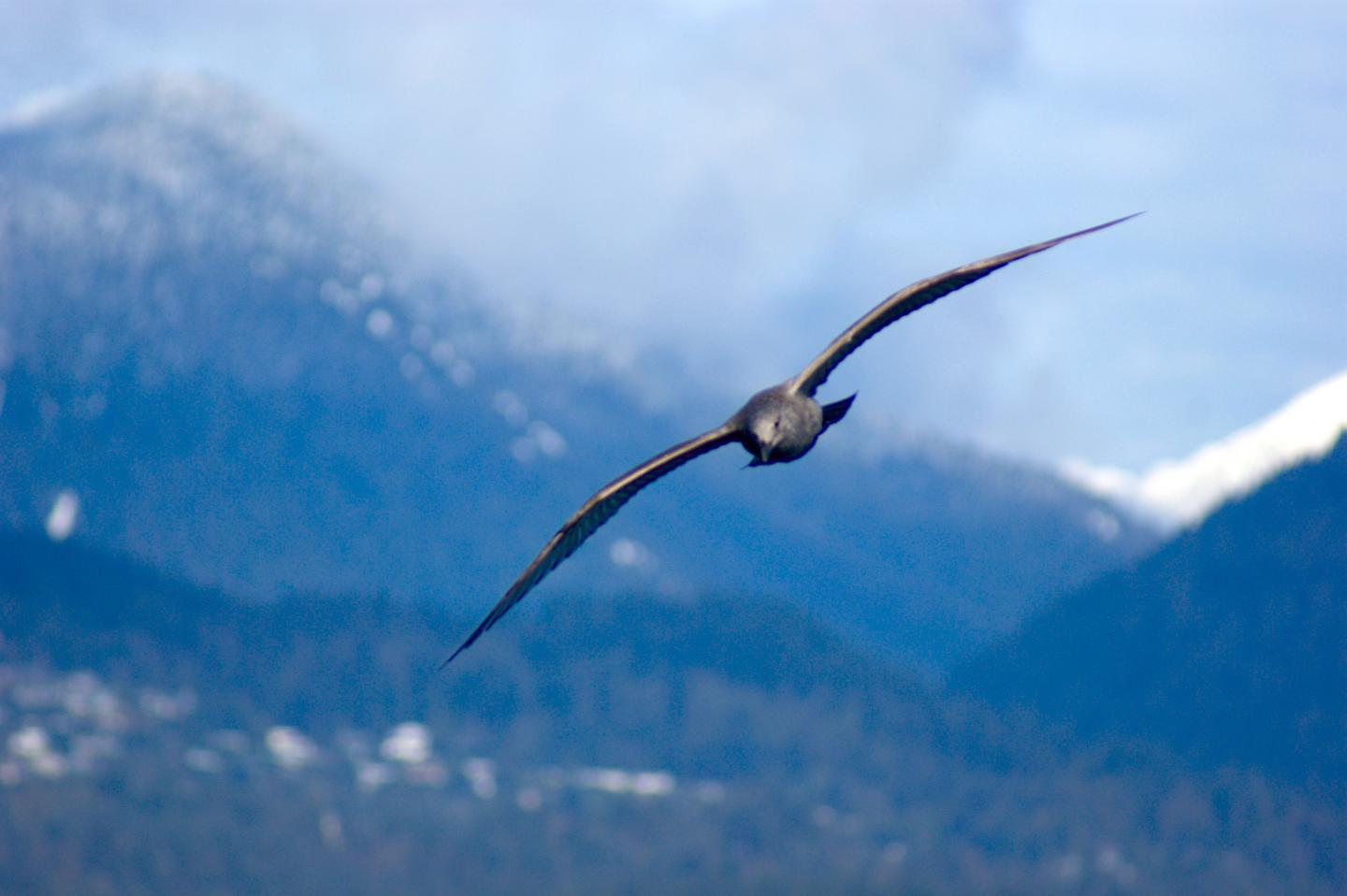Flexing a single elbow joint enables gulls to adapt their wing shape to gusty conditions–a relatively simple mechanism that could inspire improved aircraft design

Credit: Christina Harvey, University of British Columbia, University of Michigan
Flexing a single elbow joint enables gulls to adapt their wing shape to gusty conditions, according to new University of British Columbia (UBC) research–a relatively simple mechanism that could inspire improved aircraft design.
“While we know birds frequently alter their wing shape, this is the first empirical evidence demonstrating how that wing morphing affects avian stability,” says UBC zoologist Douglas Altshuler, senior author on the paper published this week in the Journal of the Royal Society Interface.
“And in this case, the gull’s wing design points to a novel, and fairly simple, avian-inspired joint that may enable aircraft to adjust dynamically to challenging conditions.”
As wing speeds and maximum gusts increase, gulls sacrifice stability for maneuverability. By altering the angle of their elbow joint they shift from extended wing configurations to a flexed configuration, pulling the tips of their wings in and back. The flexed shape gives them more control.
To determine the stability of different wing shapes, Altshuler and researcher Christina Harvey prepared gull wings over the anatomical elbow range and measured their performance in a wind tunnel. They also observed gulls in the wild.
“The Wright brothers weren’t the first to design an aircraft that was able to fly, but they were the first to successfully control and stabilize a powered aircraft inflight,” says Harvey, now with the University of Michigan.
“Likewise, it’s not enough for birds to simply produce sufficient lift and thrust. They must also control and stabilize their flight paths to be able to successfully forage and migrate in their natural habitat.”
To get a fuller picture of how birds maintain their stability while gliding the researchers want to study a wider range of wind perturbations — gulls often encounter unsteady, large-scale turbulence while flying in the wake of buildings or convective air flows over open water. Atmospheric turbulence in these conditions is likely larger than the wind tunnel turbulence the researchers used in the study.
###
Media Contact
Chris Balma
[email protected]
604-202-5047
Original Source
https:/
Related Journal Article
http://dx.




